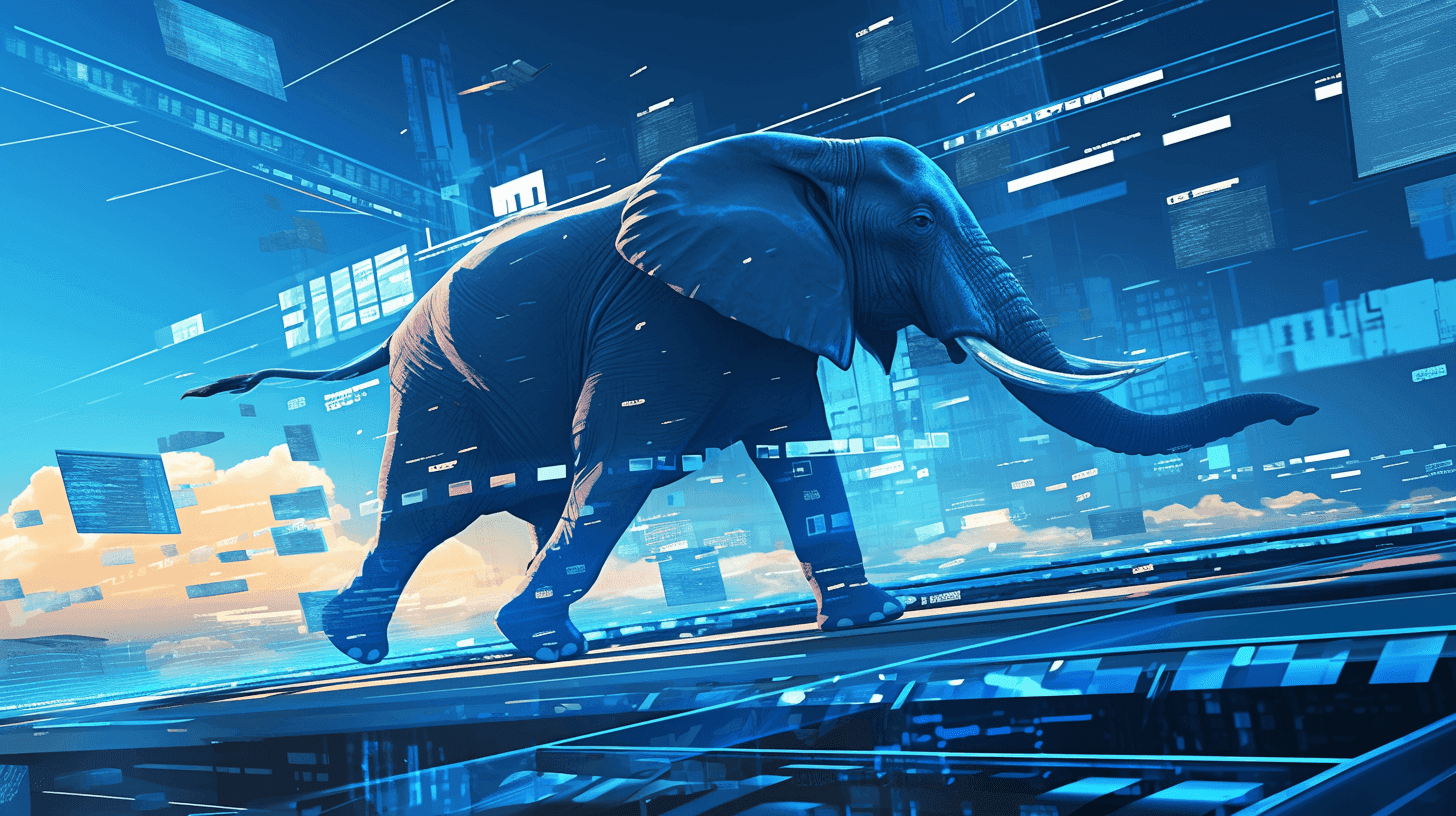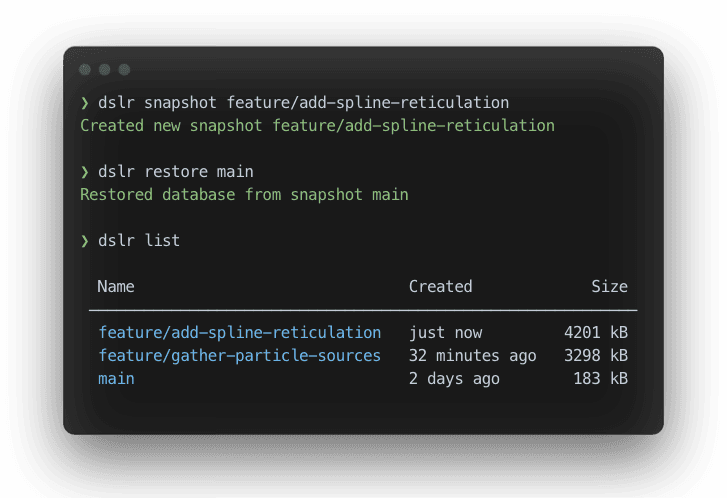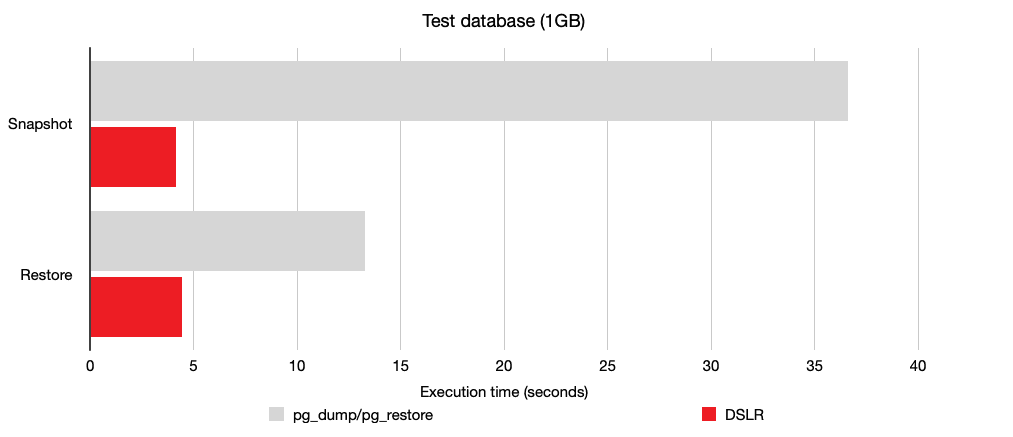
Similar Articles
How to Effectively Integrate Playwright with Prisma Using Seeding? 🎭🌱
6/2/2025
Mastering State and Data Synchronization in Modern React Applications
6/17/2025
Your Own Personal Jarvis (or maybe just a Smart Teacup): Building a Local, Private LLM
6/18/2025
Auth is a Dumpster Fire. Can 'Better Auth' Put It Out?
7/19/2025
Revolutionize PostgreSQL Backups with DSLR: Snapshots & Restore super quickly 🚀
when you are devlopping a project, you may need to set up you database with specific data, or you may need to test a new feature on a fresh database. You may want to have a quick way to backup and restores theses data to replicate the tests.
The traditional way to do it is to use pg_dump and pg_restore commands. But we wil see that it's not the most efficient way to do it.
DSLR emerges as a groundbreaking tool, turbocharging PostgreSQL backups and restores.
Introducing DSLR: The Game Changer

Picture this: you are testing a data migrations script, and each iteration demands a fresh database state. You have no choice but to reset your database to its initial state, a process that feels like a slow and painfull.
The traditional route of pg_dump and pg_restore feels like a slow march through molasses. Then, DSLR enters the scene, promising a seismic shift in efficiency.
DSLR—Database Snapshot, List, and Restore - use another approach to capturing and reviving local Postgres databases. Ideal for the dynamic workflows of database migrations, branch transitions, or SQL trials, DSLR redefines development rhythm by injecting unparalleled speed into the process.
DSLR is an opensource project, and you can find it on GitHub. It's a Python package, and it's compatible with PostgreSQL 12.3+. Anybody can contribute to the project, and it's easy to install and use.
Unmatched Speed and Efficiency
DSLR's revolution lies in its blistering performance, dwarfing the conventional pg_dump/pg_restore method. With an 8x faster snapshot capability and a 3x quicker restore function.
To achieve this black magic, DSLR harnesses PostgreSQL's Template Databases feature for rapid database cloning, turning what was once a sluggish process into a lightning-fast operation.

This efficiency isn't mere speculation; it's a proven advantage. I personally experienced a dramatic speedup in my workflows, paving the way for more development and less idle screen gazing.
Kickstarting Your DSLR Journey : How to set it up
In order to install DSLR, you can use pip, the python package manager.
pip install DSLR psycopg2
(or if you want it to be isolated)
pipx install DSLR[psycopg2]
Then, you need to create a configuration file, dslr.toml in the root of your project.
url = 'postgres://user:password@adress:port/bdd'
Seamless Configuration: DSLR flexes to your needs, connecting through the
DATABASE_URLenvironment variable, adslr.tomlfile, or the--urlcommand-line flag.
Ready to go !
Snapshot and Restore Simplified: Once installed, capturing and restoring your database states is as straightforward it could ! simply use :
dslr snapshot snapshot-name-> to create a snapshot of your current database state called "snapshot-name"dslr restore snapshot-name-> to restore the database to the state of the snapshot "snapshot-name"
If you are not sure anymore of the snapshots you have, you can list them with
dslr list
DSLR also extends its prowess to snapshot management, including renaming, and even exporting/importing snapshots.
Advanced DSLR Features
Beyond basic snapshots and restores, DSLR enriches your workflow with advanced functionalities like shell completion for Bash, Zsh, and Fish, alongside configuration adaptability for seamless integration into your development ecosystem.
A big step for Development, Not Production
It's crucial to underline that DSLR's brilliance is tailored for development environments. Its methodologies, while transformative for local and test databases, are not crafted for the rigors of production environments, ensuring a dedicated focus on development efficiency without risking production stability.
FAQs
-
Q: Is DSLR suitable for production databases? A: DSLR shines in development environments and is NOT recommended for production use.
-
Q: Does DSLR play well with all PostgreSQL versions? A: DSLR is optimized for PostgreSQL 12.3+ onwards. Always refer to the latest documentation for compatibility updates.
-
Q: How can I contribute to DSLR's growth? A: Dive into the DSLR GitHub repository for how to contribute and join the movement.
Step into a More Efficient Tomorrow
Adopting DSLR for PostgreSQL management is more than a technical upgrade; it's embracing a future where development processes are not just faster, but smarter. In the evolving tech landscape, DSLR stands at the forefront, guiding us towards breakthroughs that redefine database interactions. Welcome to a new era of PostgreSQL database management, powered by DSLR.
Ready to revolutionize your development database management